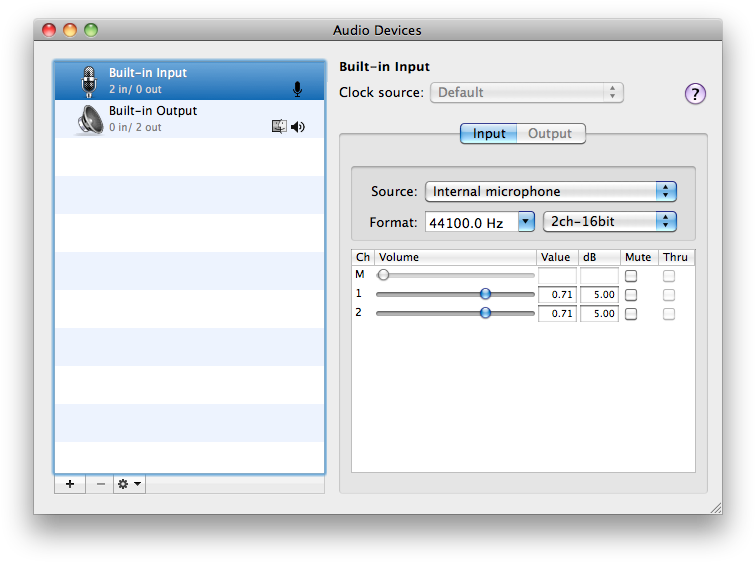
Flat power users get an exclusive access to our MIDI output feature.Often underestimated, this feature allows you to connect Flat with any MIDI compatible software or hardware. Once connected the audio stream will be redirected to the synthesizer, sequencer, sampler or MIDI device you chose, replacing Flat sounds by the one you want.
Setup with a MIDI compatible software
Step 5: Click on the 'MIDI Devices' tab. At the top of the Audio MIDI Setup window there are two tabs. Click on the tab named 'MIDI Devices.' Step 6: Make sure your MIDI interface is recognized. If you configured your MIDI interface properly (refer to step 1), you should see an icon in the Audio MIDI Setup window.
Each software offering a real-time MIDI input can be connected to Flat through the MIDI output feature.
Audio Midi Setup
On a Mac (with the iD14 again selected as the computer source) open “Audio MIDI Setup”. When it opens make sure that it is the Audio window that you are looking, if not go to Window then select Show Audio Window. Here check that the sample rate for the iD is set to the correct sample rate (and if it is not then change it). Audio Midi Setup Utilities free download - Intelliscore Polyphonic WAV to MIDI Converter, Audio Video Downloader, Cakewalk Pro Audio Patch, and many more programs. Audio MIDI Setup; Reinstall audio device driver NVRAM reset; Mac audio device connectivity. There are tons of audio devices and software apps available for Mac which use audio interfaces to playback or record audio. To make sure an audio device is connecting correctly, check the compatibility and drivers, sleep settings, connections, and then. Audio MIDI Setup is the Mac OS X utility that allows you to set up audio and MIDI devices. This month we're going to delve into the MIDI Devices tab, in order to explain how applications work with.
Create a virtual MIDI port
However, to do so, we first need to create a Virtual MIDI port which will serve as an interface between Flat and the external software.
On MacOS
It is quite easy to create a virtual MIDI port on MacOS as you don’t need to install any additional software.
- In Spotlight, search for MIDI and launch the Audio MIDI Setup utility.
- Make sure the MIDI Studio is displayed by selecting it in the Window menu.
- Double click on the IAC Driver icon. The IAC Driver Properties window will open.
- Now create a new port by clicking on the “+” button, and name it “Flat Virtual Port” for example.
- The port should now be available in Flat MIDI Output list.
On Windows and Linux
Windows and Linux don’t offer a built-in way to create virtual MIDI ports, so you will have to install a third-party software.
- Download the loopMIDI software created by Tobias Erichsen.
- Unzip it and proceed to the setup.
- Once installed, launch it.
- Give a name to your port in the text field at the bottom, “Flat Virtual Port” for example.
- Then, just click on the + button in the bottom-left corner to create it.
On ChromeOS
It is not possible at the moment to create virtual MIDI ports on ChromeOS. We will probably need to wait for a web browser built-in implementation.
Connecting to an external software
Once the virtual port has been created, just select it in the Output tab of Flat MIDI menu.

Finally, select the virtual port as an Input in the preferences of the software you want to connect.Below is an example with Kontakt 5.
If no MIDI input is available for the virtual instrument, you can use a Digital Audio Workstation (DAW), like Cubase, FL Studio or Ableton Live to embed the virtual instrument, then select the input on the DAW.
Setup with a MIDI device
Audio Midi Setup App
To redirect Flat audio stream to a MIDI device, select your device in the Output tab of the MIDI menu. You may also have to configure your MIDI device so it accepts a MIDI input.
Implementation Note
Audio Midi Setup Iphone
- Each part will be assigned a different MIDI channel (up to 16 parts, due to MIDI limitation), in the same order than your score layout.
- Keyswitches and several ornaments won’t be played yet. We aim to implement them later in the future.